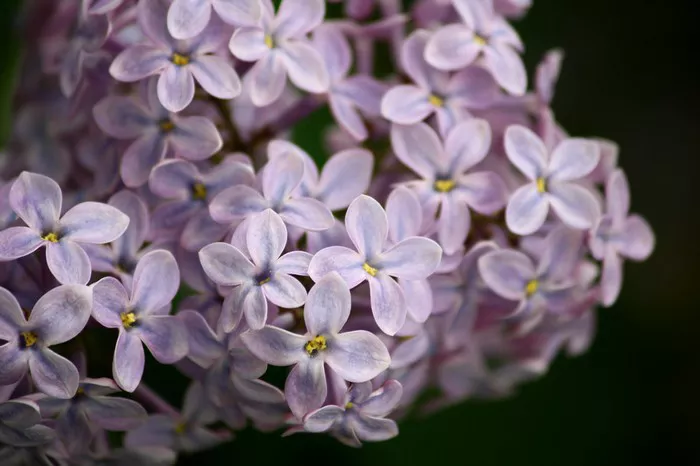In the world of culinary exploration, the boundaries of what is considered edible are constantly expanding. Flowers, once merely decorative elements, are finding their way onto plates and into kitchens, offering not only visual appeal but also unique flavors and aromas. Lilac flowers, with their enchanting fragrance and vibrant hues, have piqued the curiosity of many food enthusiasts. In this article, we delve into the question: Can you eat lilac flowers?
The Allure of Lilac Flowers
Lilacs, known for their stunning clusters of small, fragrant blossoms, have been a symbol of springtime beauty for centuries. Their delicate petals and sweet aroma make them a favorite in gardens and floral arrangements. Beyond their ornamental value, lilac flowers have recently gained attention for their potential use in the culinary world.
Culinary History of Edible Flowers
Before exploring the edibility of lilac flowers, it’s essential to understand the broader history of consuming edible flowers. Culinary traditions worldwide have long incorporated flowers into various dishes, from salads to desserts. Ancient civilizations, such as the Greeks and Romans, were known to use flowers in their cuisine for both aesthetic and gastronomic purposes.
In more recent times, chefs and home cooks alike have embraced the idea of using flowers as ingredients, bringing an element of creativity and novelty to their dishes. Edible flowers like violets, nasturtiums, and pansies have become staples in modern gastronomy, adding color, flavor, and texture to a wide range of culinary creations.
The Edible Flower Renaissance
The resurgence of interest in edible flowers is part of a larger movement toward sustainable and locally sourced ingredients. As consumers seek more natural and visually appealing foods, chefs and food enthusiasts have turned to the vast array of edible blooms available. This renaissance has led to the exploration of unconventional floral options, including the beloved lilac.
Are Lilac Flowers Safe to Eat?
While the idea of incorporating lilac flowers into your culinary endeavors may be tempting, the first consideration is safety. Not all flowers are edible, and some can be toxic or cause allergic reactions. Before indulging in floral cuisine, it’s crucial to identify the specific variety of lilac you have and ensure its safety for consumption.
The common lilac (Syringa vulgaris) is generally considered safe to eat in moderation. However, caution is advised, as individual reactions to flowers can vary. It’s essential to rule out any allergies and confirm the absence of pesticides or other contaminants before adding lilac flowers to your plate.
Nutritional Value of Lilac Flowers
Beyond their safety, exploring the nutritional content of lilac flowers adds another layer to the discussion. While not a significant source of macronutrients, lilac flowers can contribute unique micronutrients and antioxidants to your diet. These delicate blossoms may contain vitamins such as vitamin C and various phytochemicals that contribute to overall health and well-being.
Culinary Uses of Lilac Flowers
Once you’ve confirmed the safety and nutritional value of lilac flowers, the exciting part begins: incorporating them into your culinary creations. Lilac flowers offer a subtle, floral flavor that pairs well with both sweet and savory dishes. Here are some creative ways to use lilac flowers in your kitchen:
1. Lilac Infused Syrup:
Create a fragrant lilac-infused syrup by steeping the blossoms in a simple syrup base. This versatile syrup can be used in cocktails, mocktails, and drizzled over desserts like pancakes and ice cream.
2. Lilac-Infused Honey:
Infuse honey with lilac blossoms for a delicately flavored sweetener. Use this aromatic honey in teas, dressings, or as a topping for toast and yogurt.
3. Lilac-Flavored Ice Cream:
Enhance your homemade ice cream with lilac flowers for a unique twist. The floral notes add a touch of elegance to this classic dessert.
4. Lilac Salad Garnish:
Sprinkle fresh lilac blossoms on salads for a burst of color and a subtle floral aroma. Pair them with fresh greens, goat cheese, and a light vinaigrette for a delightful springtime dish.
5. Lilac-Infused Beverages:
Experiment with lilac-infused beverages, such as iced tea, lemonade, or sparkling water. The floral infusion brings a refreshing and aromatic quality to your drinks.
Harvesting and Preparing Lilac Flowers
Before incorporating lilac flowers into your culinary creations, proper harvesting and preparation are crucial. Follow these guidelines to ensure the best results:
1. Choose Fresh, Untreated Blossoms:
Harvest lilac flowers when they are at their peak, typically in late spring. Choose blossoms that are fully open and free from pesticides or other chemical treatments.
2. Inspect for Insects:
Check the flowers for insects or debris and gently shake or tap them to remove any unwanted visitors. Rinse the blossoms under cold water to ensure they are clean.
3. Remove the Green Bases:
Trim the green base of each lilac blossom before use, as it can have a slightly bitter taste. Use only the petals for the best flavor and appearance in your dishes.
4. Use Moderation:
While lilac flowers are edible, moderation is key. Their flavor can be intense, so start with small amounts and adjust to your taste preferences.
5. Store Properly:
If you have more lilac flowers than needed, store them in an airtight container in the refrigerator. Use them within a few days for the freshest flavor.
Conclusion
As the culinary landscape continues to evolve, embracing the beauty and flavor of lilac flowers adds a touch of nature’s elegance to your plate. So, the next time you find yourself surrounded by blooming lilacs, consider bringing their enchanting essence into your kitchen for a floral feast that engages not only your taste buds but also your senses.


